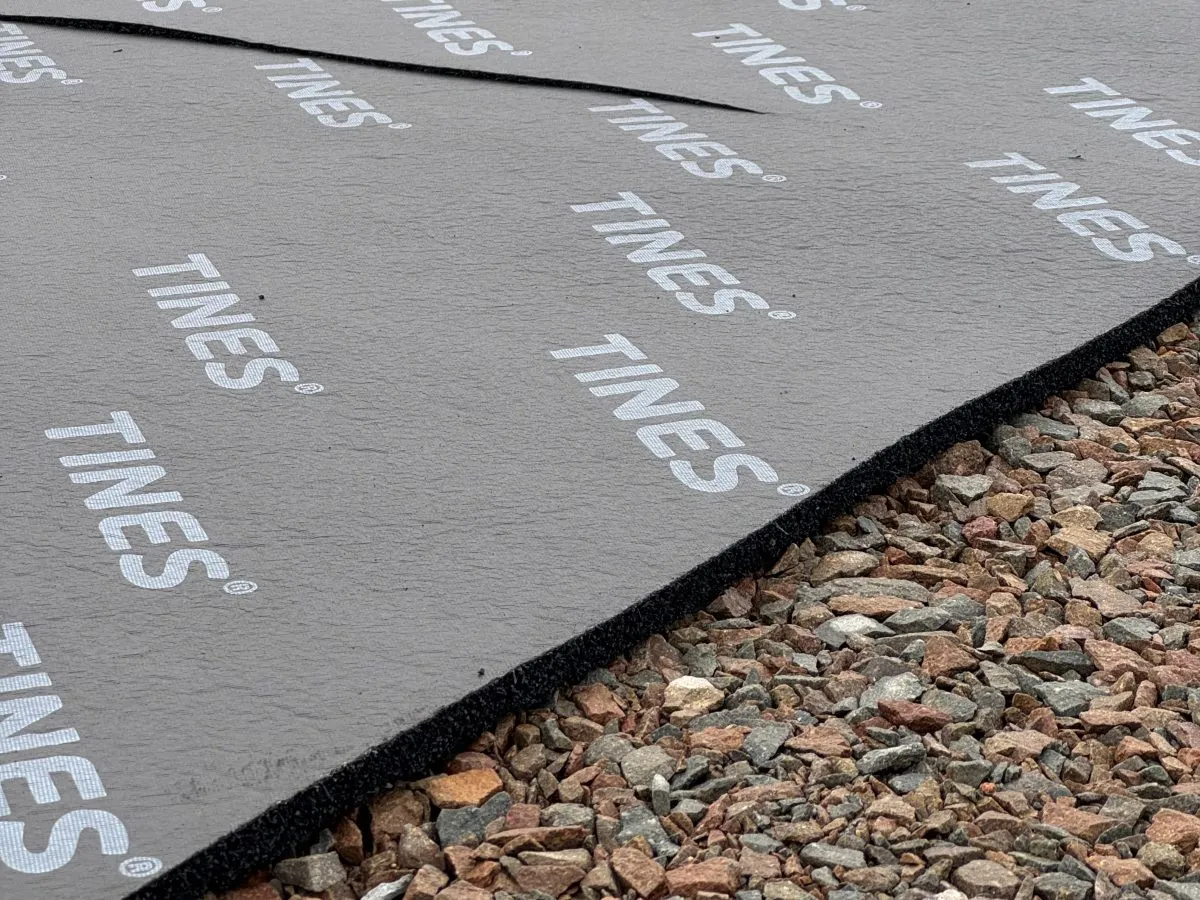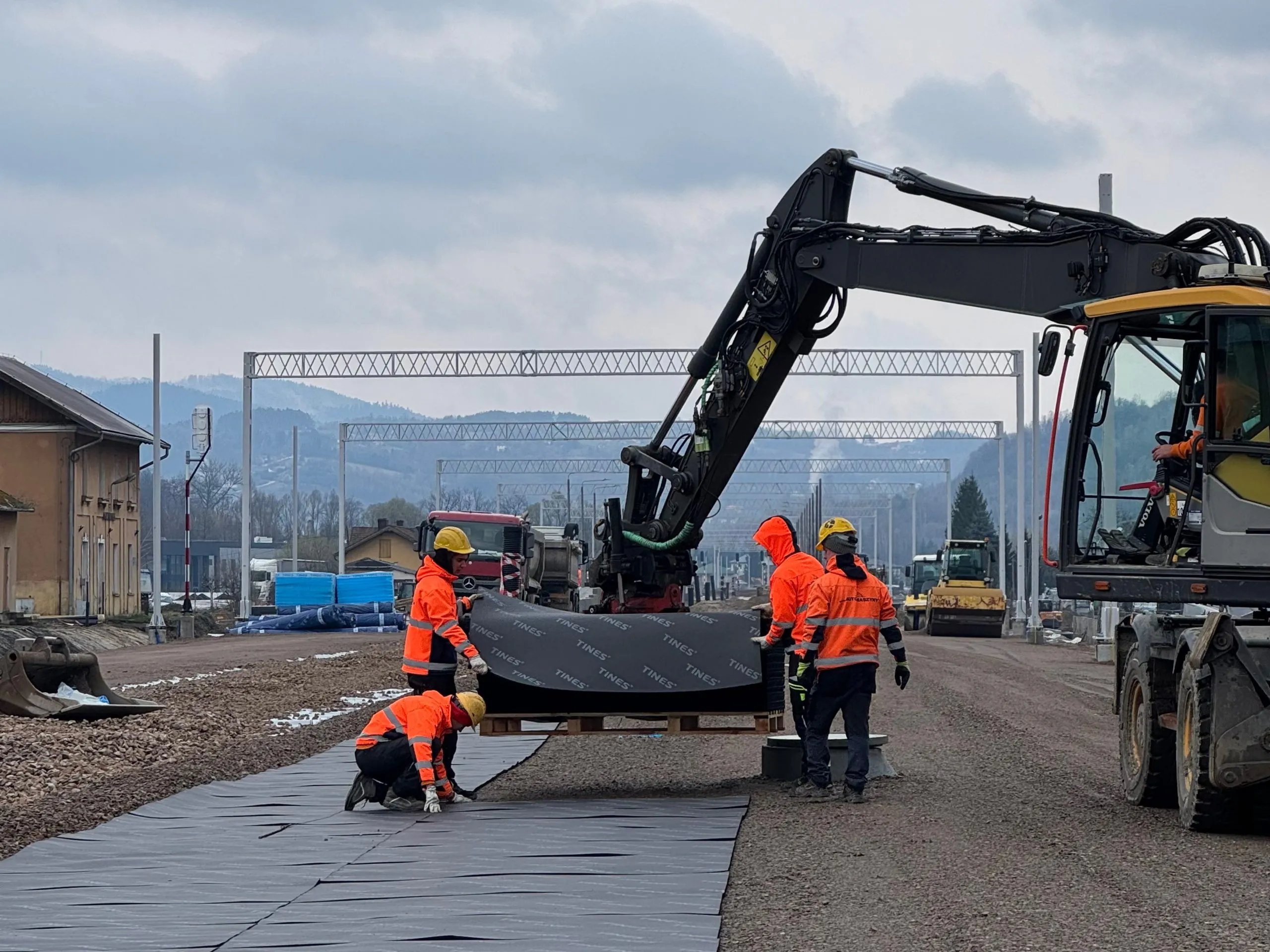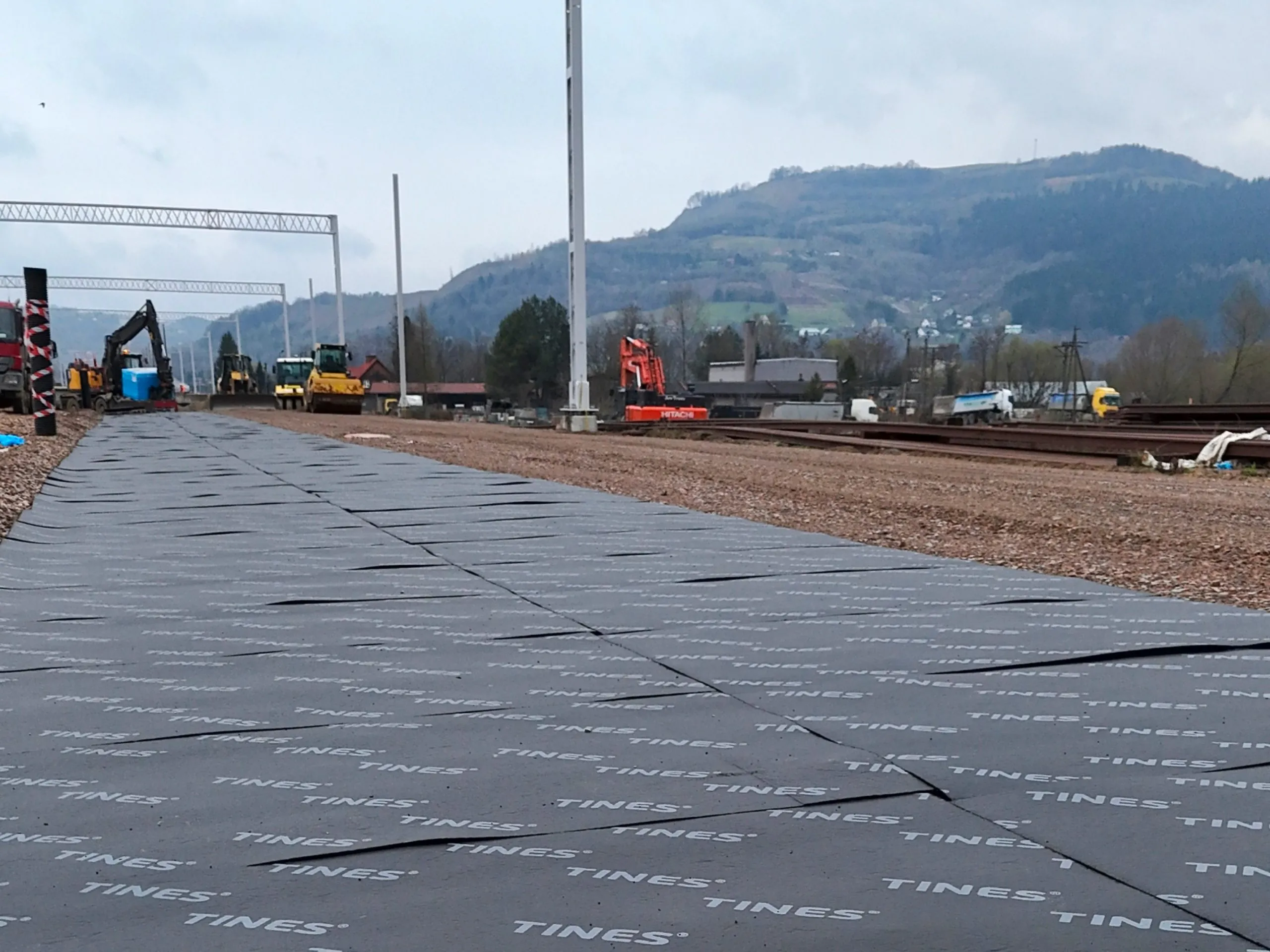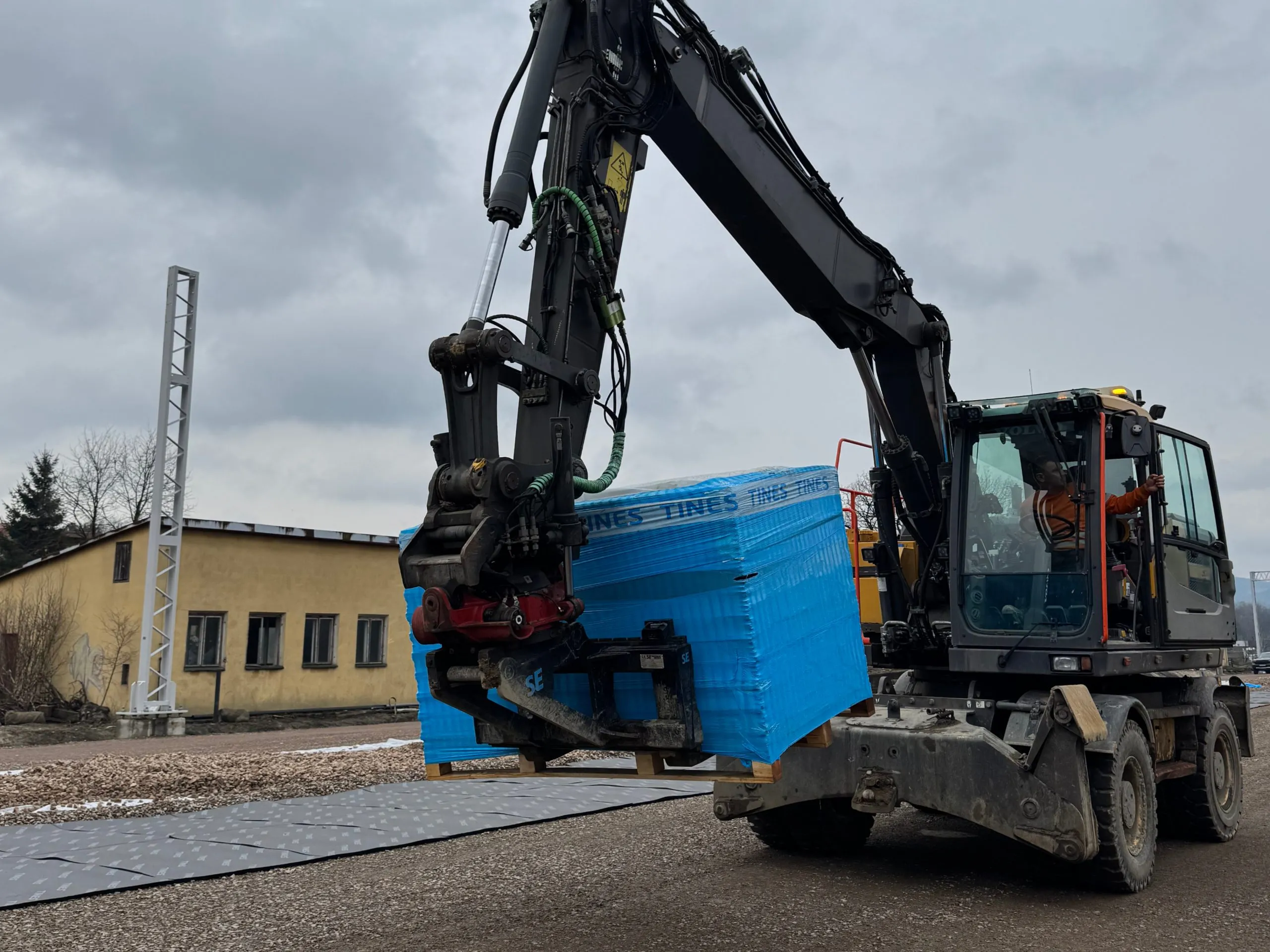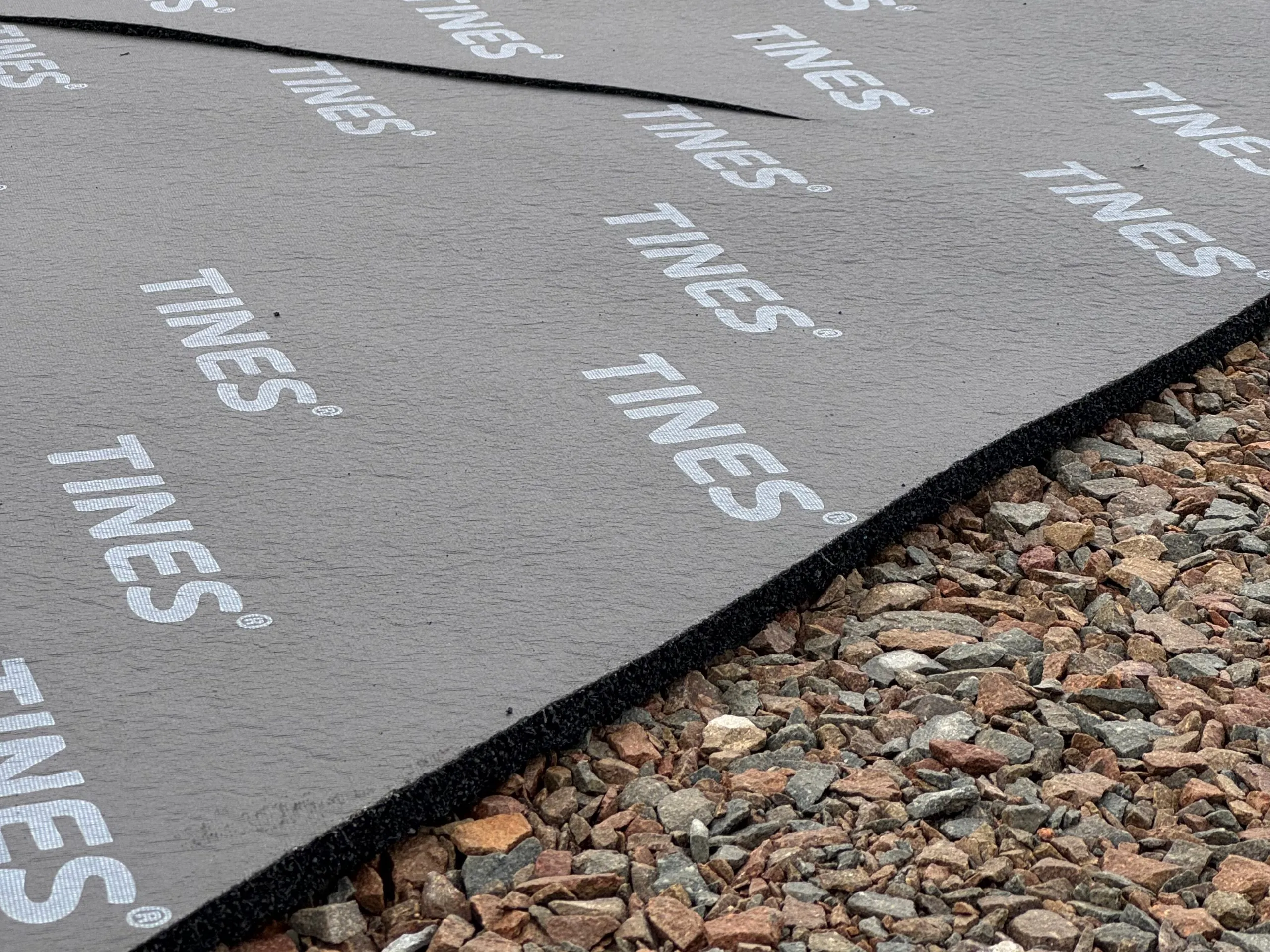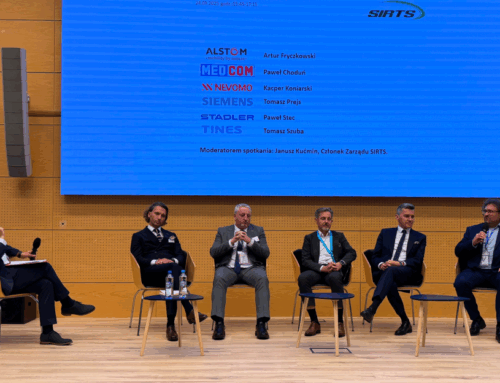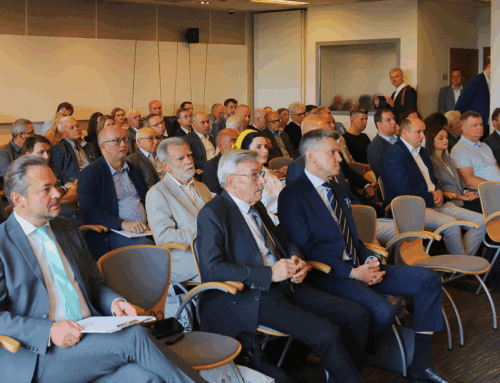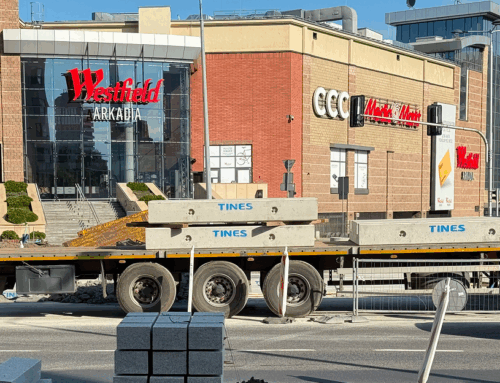Client: PKP Polskie Linie Kolejowe S.A.
Main contractor: TORPOL S.A.
Design unit: Egis Rail S.A. / Egis Poland Sp. z o.o. / MGGP S.A.
Project engineer: Safege S.A.S., Poland Branch
Track structure specified in the detailed design
A ballast track superstructure with the following technical-operational parameters:
- Maximum speed for passenger trains (conventional rolling stock): V<sub>p max</sub> = 150 km/h
- Speed for freight trains: V<sub>t max</sub> = 100 km/h
- Maximum axle load: 22.5 t (221 kN/axle)
- TSI traffic code for passenger services: P4
- TSI traffic code for freight services: F2
Adopted values: ballast thickness 0.35 m; new rails type 60E1; rail-fastening system SB or K.
Selection of the under-ballast vibration-isolating mat
The mat was selected on the basis of performance parameters required for proper behaviour in the track during operation and in accordance with the technical specifications for installing a vibration-isolation layer in ballast track.
According to the design, vibration isolation is provided in zones where the track affects existing or new buildings and geotechnically sensitive sections located less than 25 m from the centreline of the main track, as required by Technical Standards – Volume XIII Buildings, section 4.1 (PKP PLK S.A.), including landslide-protected areas.
Under-ballast mats are used beneath the main line, every additional main track, and siding No 2a (Klęczany station siding) on sections of line No 104.
Key effectiveness parameters (IRS-70719-1:2023 & PN-EN 17282)
- Static bedding stiffness (C<sub>stat</sub>) – ratio of a defined static load to the resulting deflection of a specimen; describes rail deflection under stationary rolling stock.
- Dynamic bedding stiffness (C<sub>dyn</sub>) – ratio of a defined dynamic load and frequency to the corresponding deflection; governs vibration attenuation and must be tested under standardised load and frequency.
- Fatigue resistance – durability confirmed after 3 million dynamic load cycles simulating real service conditions.
Importance of durability
Because of its position in the track structure, the mat’s life span must match that of rails, sleepers and ballast; replacement would otherwise require dismantling the entire track.
Environmental benefits of TINES® Rubbermat (recycled SBR/EPDM)
- reduced consumption of natural resources,
- lower waste generation,
- energy savings and CO₂-emission reduction,
- decreased air, water and soil pollution.
Compliant with the DNSH principle (“Do No Significant Harm”), the mats are manufactured from tyre-derived granulate under ISO 9001 and ISO 14001 quality-environmental management. Automated multi-layer thermoforming with a polyurethane binder yields a permanently elastic composite ensuring stable performance throughout the infrastructure’s life cycle.
Read also
Comprehensive construction solutions and ballastless track systems for railways, ensuring effective vibroacoustic insulation and a guarantee of durability for mainline tracks, engineering structures (bridges, viaducts, tunnels, and rail-road crossings).
A comprehensive offer of durable materials for the construction of tram tracks, allowing to reduce the level of vibrations and noise in the vicinity of the route.



